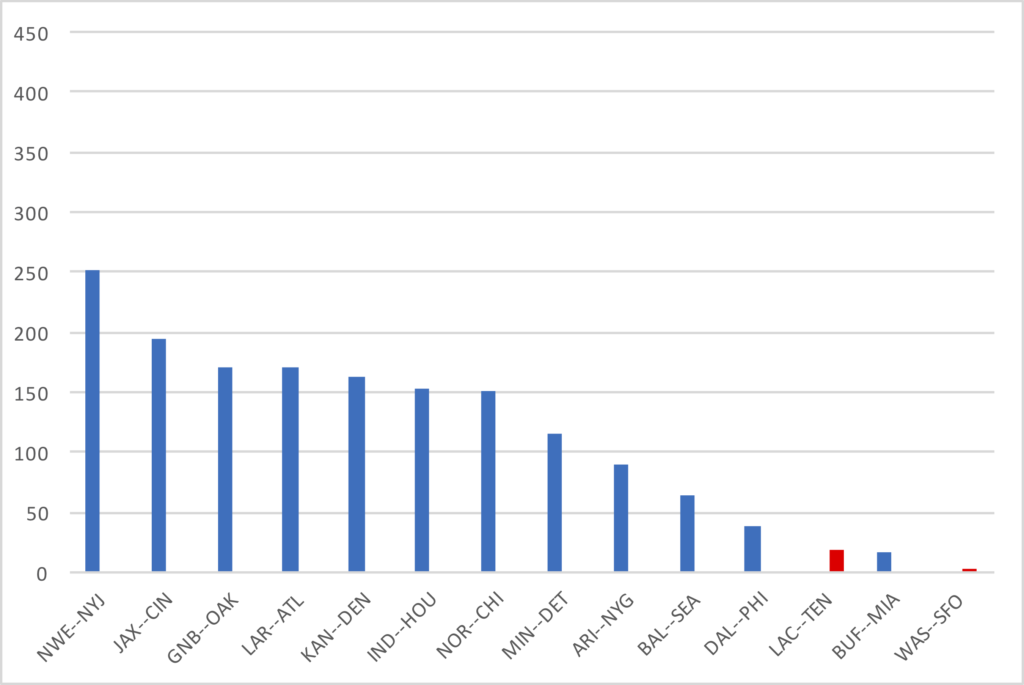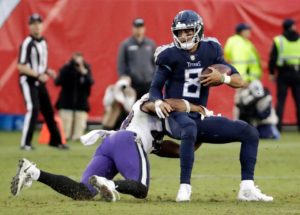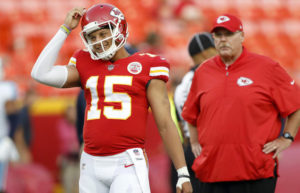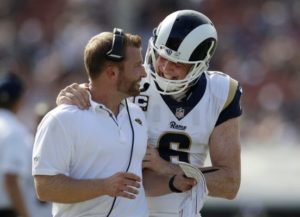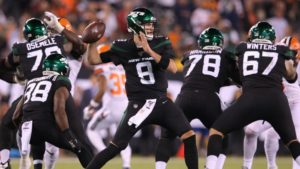The Rams just traded a 2020 first round pick, a 2021 first round pick, and a 2021 fourth round pick for Jaguars All-Pro cornerback Jalen Ramsey.
A few weeks ago, the Steelers traded a 2020 first round pick, a 2020 fifth round pick, and a 2021 sixth round pick to the Dolphins for Minkah Fitzpatrick and a 2020 fourth round pick, and a 2021 seventh round pick. In addition, the Texans traded for Laremy Tunsil and Kenny Stills, along with a 2020 fourth round pick and 2021 sixth round pick from Miami for a 2020 first round pick, a 2021 first round pick, a 2021 second round pick, and Johnson Bademosi and Julie’n Davenport.
This came after an offseason where the Browns traded with the Giants for Odell Beckham and sent back to New York Jabrill Peppers, a 2019 1st round pick (#17, used on Dexter Lawrence) and 2019 third round pick (#95, Oshane Ximines).
That was the second blockbuster trade for a wide receiver in less than six months, after the Cowboys sent a 2019 1st round pick (which turned out to be the 27th pick and was used on Johnathan Abram) to the Raiders for WR Amari Cooper.
And, of course, the Cooper trade followed the blockbuster Khalil Mack trade, where Chicago tradeda 2019 first round pick (which turned out to be #24 and used on Josh Jacobs), a 2019 sixth round pick, a 2020 first round pick, and a 2020 third round pick to the Raiders for Mack, a 2020 second round pick, and a 2020 conditional fifth round pick.
It is the Mack trade that appeared to open the floodgates: Mack was the runner-up for the 2018 AP Defensive Player of the Year award, and was the star of a Bears defense that was the best in the NFL. Similarly, the Cowboys trade for Cooper was widely (and rightly) panned at the time, but Cooper put on a dominant performance: in 10 games with Dallas, including the playoffs, he gained 838 receiving yards and 6 touchdowns.
The problem with the Mack and Cooper trades, however, wasn’t the player acquired but the cost. In addition to significant draft capital, Chicago had to hand Mack an enormous contract, and the Cowboys are paying Cooper over $13M this year and will soon have to sign Cooper to a large deal, too. Mack had played 4 years in Oakland, and Cooper 3, meaning their years on cheap, cost-controlled contracts were in Oakland.
The Browns/OBJ trade was a bit different: Cleveland will pay Beckham a little over $15M per year, but (1) there is no signing bonus, and therefore Cleveland can cut him at any time, and (2) he’s coming at a bit of a discount relative to his true value, since the Giants ate his signing bonus. It’s not a cheap contract by any means, but I suspect Cleveland will be happier with his contract than Dallas will be with whatever they hand Cooper.
The Tunsil and Fitzpatrick trades felt crazy at the time, and that’s how this Rams/Ramsey one does, too. Yes, Ramsey is young — he turns 25 years old next week — but he’s going to cost a lot of money. Los Angeles handed out a record-breaking contract to its running back, its quarterback, and its defensive tackle, and L.A. will have to do the same with Ramsey, too. If Ramsey was a free agent, and the Rams signed him to the richest contract in cornerback history, there are some who would criticize that move. To give up two first round draft picks for the honor to do that is extremely risky. [continue reading…]


